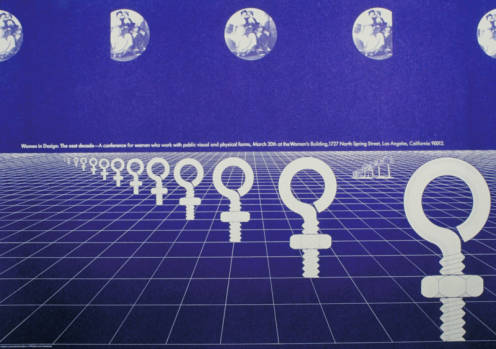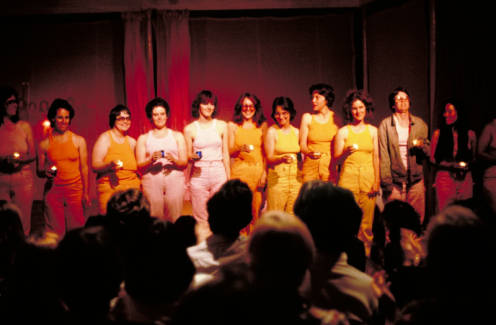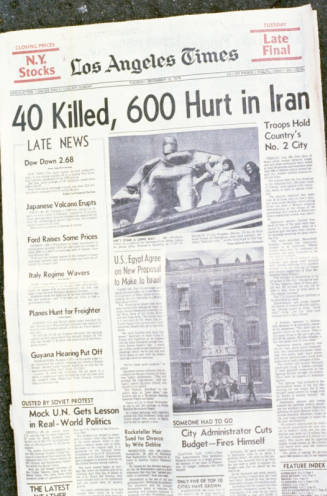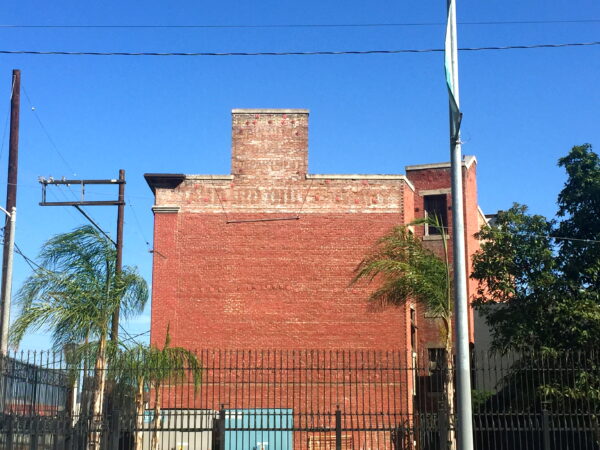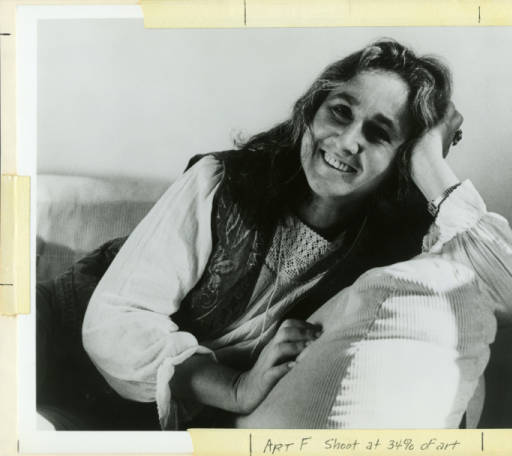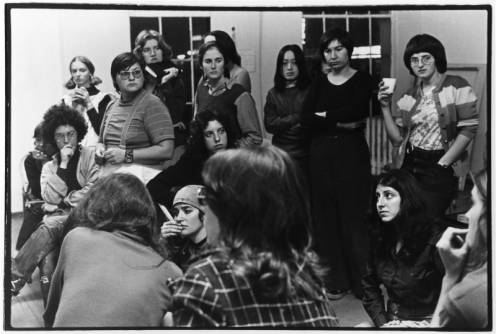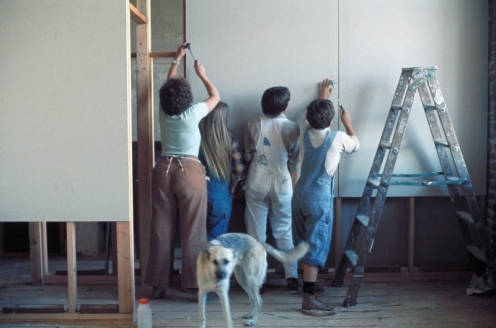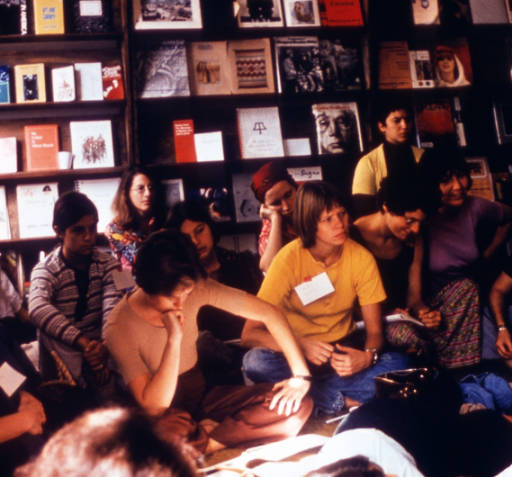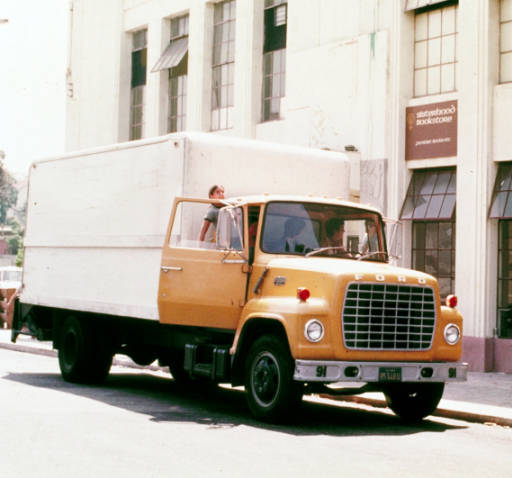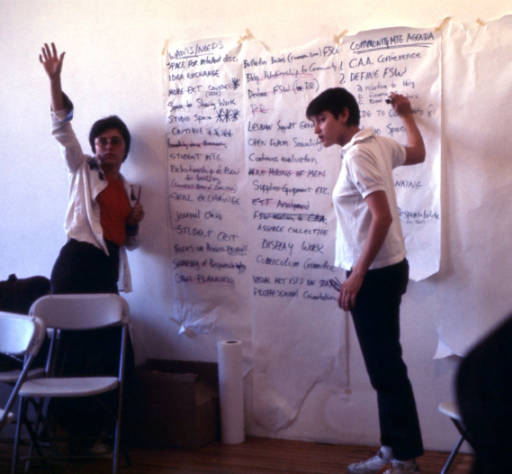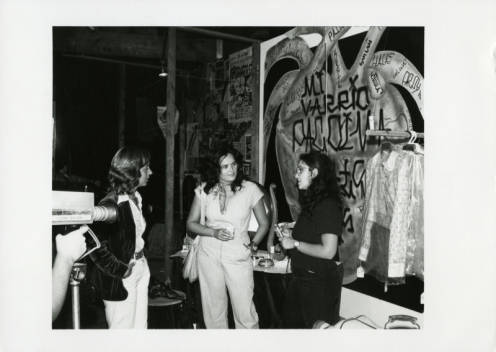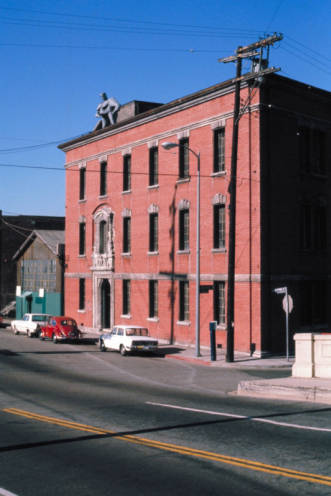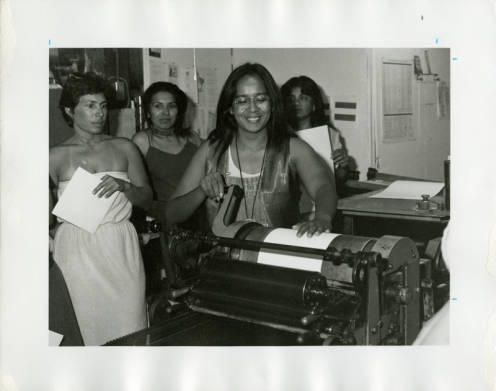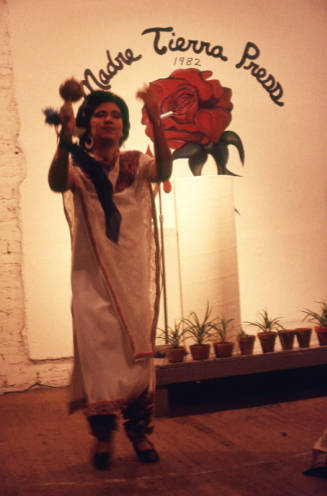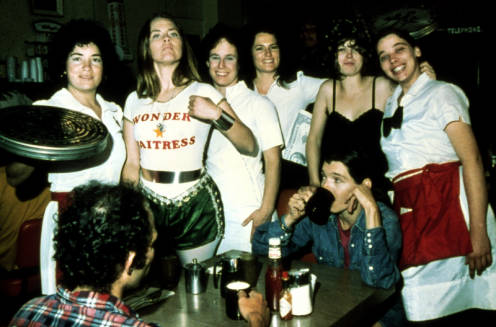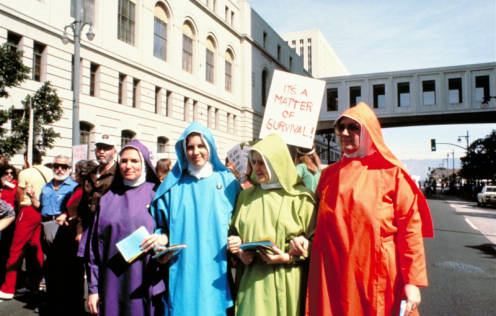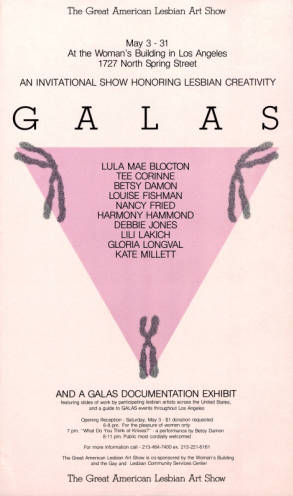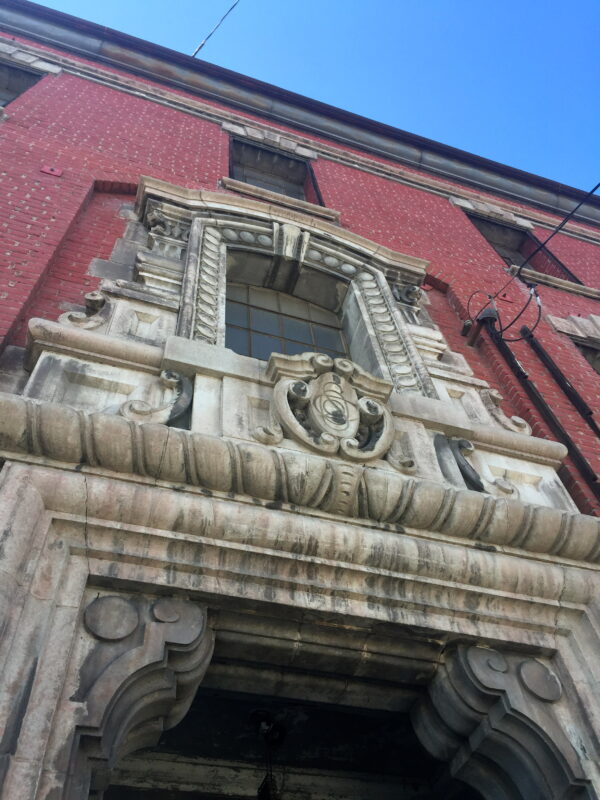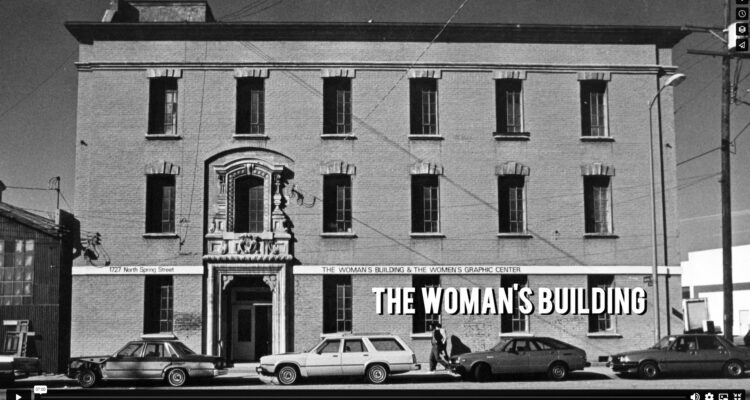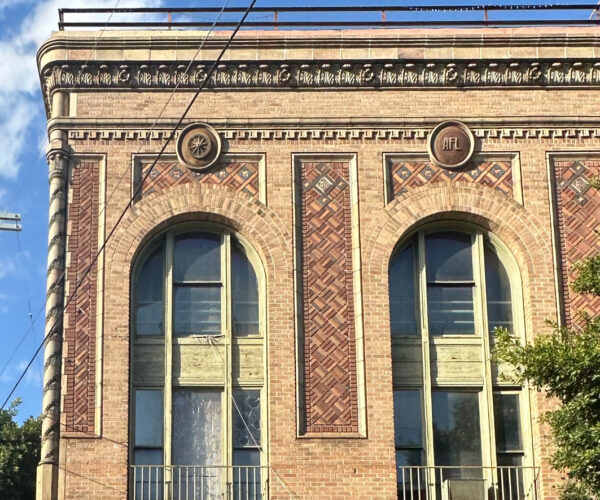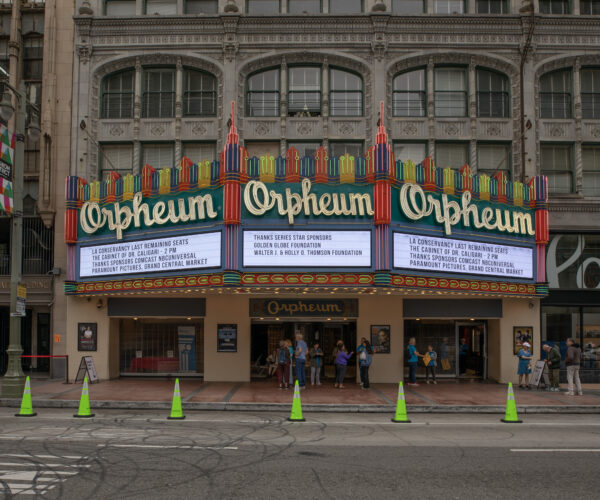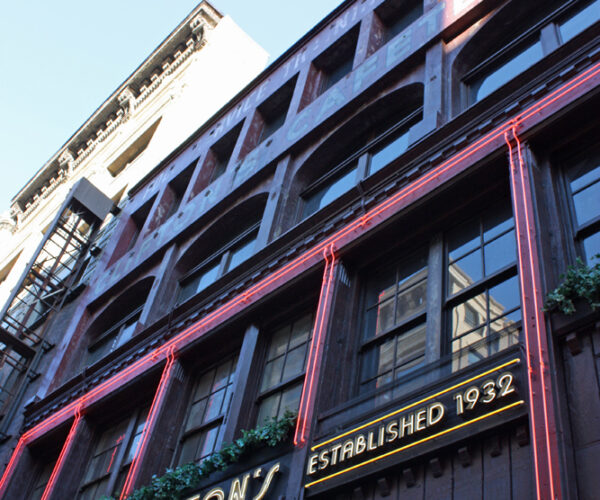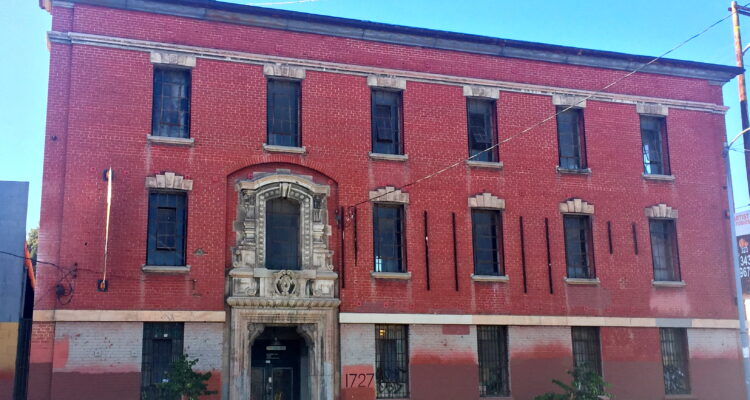
Place
The Woman's Building
Established in 1973, The Woman's Building fostered experimental lesbian and feminist art for nearly twenty years.
On June 8, 2018 the Conservancy’s nomination for The Woman’s Building was declared a Los Angeles Historic-Cultural Monument (HCM).
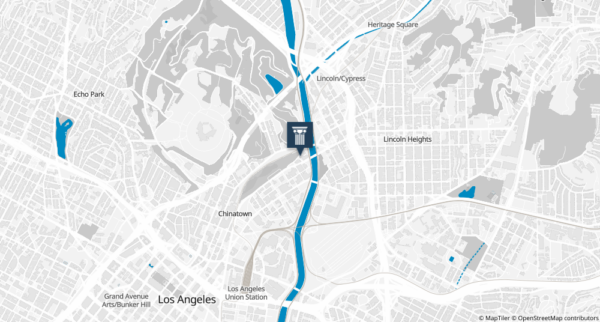
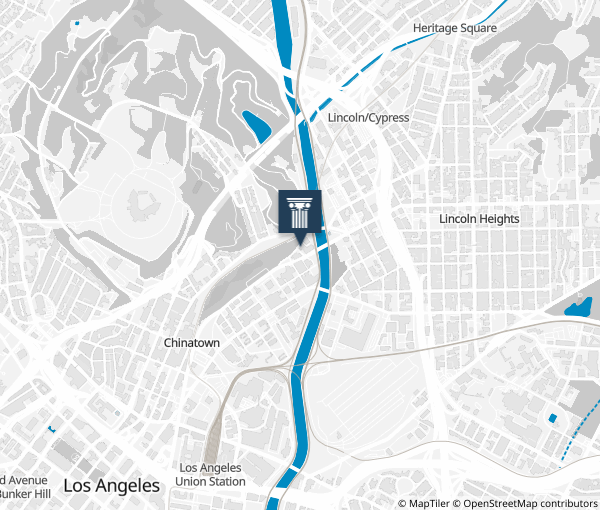
Place Details
Address
Architect
Year
Style
Property Type
Government Officials
Community
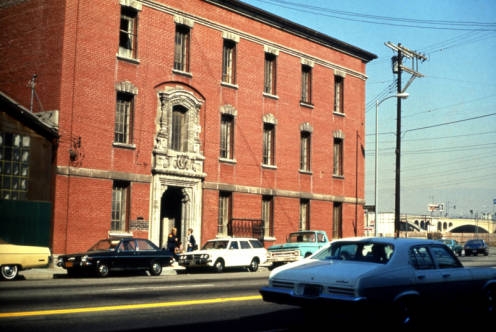
The Woman's Building | Courtesy of Otis College of Art and Design
Overview
On June 8, 2018 the Los Angeles City Council voted to declare Historic-Cultural Monument (HCM) designation for The Woman’s Building. This ensures protection and a design review process for the building should there ever be a project or modifications proposed.
Many thanks to the community members who have supported the Conservancy’s nomination by attending hearings, testifying, writing letters of support, and spreading the word! We could not have accomplished this result without the overall passion you brought for The Woman’s Building and all that it represents. The Conservancy especially wants to thank then-Councilmember Gil Cedillo for his strong support of the nomination, and to the National Trust for Historic Preservation for their generous support that allowed us to fund the nomination.
The Woman’s Building is highly significant as the longtime home of the Feminist Studio Workshop (FSW), the first independent art school for women. FSW operated out of the 1914 Beaux-Arts building at 1727 North Spring Street from 1975 until its closure in 1991. The nonprofit center was known as The Woman’s Building in reference to the creative achievements and autonomy of female artists.
Throughout its eighteen-year run, The Woman’s Building cultivated an experimental space for women from around the world to explore ideas in feminist theory and sexuality through art. Artists whose work may have been marginalized in other venues found a platform for expressing political goals and viewpoints.
The very notion of a public space for female artists underscored the existence of a distinctive “women’s culture” in the 1970s and ‘80s, one that grappled with dynamics of gender, sexuality, race, and class to varying degrees.
The Woman’s Building, the institutions it housed, and the art it produced lie at the intersecting histories of second-wave feminism, postwar art, and the politics of queer feminism. (Read why and how we use the term “queer.”)
For many female artists – lesbian, straight, and bisexual – the building served as a haven within the male-dominated art world, a place where women sought to develop an authentic voice.
Perhaps even more significantly, The Woman’s Building revealed a unique cultural exchange among lesbian, straight, and bisexual women in the context of second-wave feminism. Here, women embraced and nurtured an arena of their own to negotiate the complexities of gender and sexual identity.
The idea of a visible LGBTQ community did not yet exist, and many lesbians and bisexual women aligned themselves with the feminist movement as opposed to the male-centric gay liberation movement of the 1960s and ‘70s. Though gay and bisexual men faced broad discrimination because of their sexual identities, queer women faced additional sex and gender-based inequities in educational settings, the workplace, and the healthcare and legal systems.
The Woman’s Building gave its artists a space in which to confront pressing social and cultural issues, often with provocative results. Its founders believed that art was directly connected to activism, and the organization strove to better support working women and women of color as it expanded in the 1980s.
Ultimately, it achieved international acclaim for its commitment to the creative achievements of women, and its contributions to feminist and lesbian culture continue to echo around the art world.
“I think The Woman’s Building, for its time, was really unique, and it was a symbol of the feminist art movement,” reflects Sue Maberry, who was active with the organization from 1977 to 1988. “It was a center for feminist art and creation.”
About This Place
About This Place
Founded as an act of protest, The Woman’s Building is a cornerstone in late-twentieth-century lesbian and feminist culture.
From 1973 to 1991, the Los Angeles-based organization and facility stood as a counterpoint to most major American museums, galleries, and arts programs, which routinely excluded female artists from their circles. Created by and for women, The Woman’s Building exemplified the impulse among feminists, including lesbians and bisexual women, to establish autonomous spaces outside of traditional, patriarchal institutions.
Three trailblazing women – artist Judy Chicago, art historian Arlene Raven, and graphic designer Sheila Levrant de Bretteville – came together in 1973 to create the first independent art school for women called the Feminist Studio Workshop (FSW). The founding of the FSW represented a crucial milestone of for feminist activism within the art world, which targeted mainstream institutions for their broad dismissal of female artists.
The FSW was originally headquartered at 743 S. Grand View Street, near MacArthur Park. The founders and students began to describe the educational center as The Woman’s Building, a tribute to the Sophia Hayden-designed structure at the 1893 World’s Columbian Exposition in Chicago, which exhibited work by female artists from around the globe.
In addition to the FSW, the building housed a number of likeminded feminist institutions, including the National Organization for Women (NOW) and the first Sisterhood Bookstore.
In 1975, the organization relocated to the 1914 Beaux Arts building at 1727 N. Spring Street, where it remained until its closure in 1991. Like its predecessor, the nonprofit center was known as The Woman’s Building in reference to the creative achievements and autonomy of female artists.
Throughout its eighteen-year run, The Woman’s Building cultivated an experimental space for women from around the world to explore ideas in feminist theory and sexuality through art. Artists whose work may have been marginalized in other venues found a platform for expressing political goals and viewpoints.
The very notion of a public space for female artists underscored the existence of a distinctive “women’s culture” in the 1970s and ‘80s, one that grappled with dynamics of gender, sexuality, race, and class to varying degrees.
Learn more: Doin’ It in Public: Feminism and Art at the Woman’s Building, a program by the Otis College of Art and Design produced in 2011-2012 as part of the Getty’s Pacific Standard Time initiative.
Located in an industrial corridor north of downtown, the three-story brick building on Spring Street was originally constructed for Standard Oil Company. The company commissioned master architect Myron Hunt to design the building as a new sales department office.
Artists with the Feminist Studio Workshop (FSW) were tasked with transforming its cavernous interior into studios and performance spaces upon acquisition of the building in 1975. With limited resources, the women completed the project themselves, gaining new skills in construction and building maintenance.
Artist Cheri Gaulke, who was active at The Woman’s Building from 1975 to 1991, recounts: “We soon came to realize that it was an opportunity to be empowered, that we could learn skills that we’d never learned before and, more important, that we could just create our place in the world, which is really what The Woman’s Building represented. It was a public center for women’s culture.”
Two of the FSW’s most ambitious projects were the Lesbian Art Project (LAP) and the Great American Lesbian Art Project (GALAS).
Arlene Raven, one of FSW’s co-founders, spearheaded LAP with writer and performer Terry Wolverton. Composed of workshops, performance pieces, and exhibitions, LAP sought to challenge common portrayals or misconceptions of lesbian culture and to elevate the contributions of lesbians to art history. The project lasted from 1977 to 1979.
One of LAP’s most significant works was “An Oral Herstory of Lesbianism,” written and directed by Terry Wolverton. The thirteen-member performance took place at The Woman’s Building in 1979 and featured a series of vignettes exploring lesbian experiences and struggles.
Under GALAS, students and staff of the FSW examined the current state of lesbian art across the United States and held both formal and underground exhibitions throughout the country in 1980.
GALAS stood in contrast to other projects in that its curators directly confronted issues of race and exclusion within the queer and feminist art movements. Reflecting racial and economic dynamics in the 1970s and ’80s, women of color were largely left out of institutional activities and conversations in the art world.
Through alliances with other artists and nonprofits, the project exceeded its original scope by bringing greater recognition to the experiences of lesbians of color. The Women’s Building itself grappled with ongoing questions about inclusion and attempted, with varying degrees of success, to address diversity issues through its programming and leadership.
In addition to LAP and GALAS, The Woman’s Building nurtured performance art groups such as The Waitresses, Sisters of Survival, and Feminist Art Workers, as well as a vibrant literary scene through its Writing Series. The program featured celebrated feminist writers such as Audre Lorde, Deena Metzger, and Adrienne Rich.
The FSW discontinued its programming in 1981 as a result of dwindling demand for alternative educational institutions. The Woman’s Building continued to operate as a gallery and performance space, and studios were rented out to local artists.
Following FSW’s closure, the board founded the for-profit Women’s Graphic Center in the ground floor of the building. The business was intended to help sustain the organization’s operation and to provide new training and services. At its peak, the center offered graphic design, typesetting, production, and printing services. It ceased operations in 1988.
The Woman’s Building officially closed its doors in 1991, at which time the Los Angeles Times referred to the space as a “feminist mecca.”
Our Position (Where LAC Stands and Why)
The Conservancy nominated The Woman’s Building for designation at a City of Los Angeles Historic-Cultural Monument to recognize its significance as the longtime home of the Feminist Studio Workshop (FSW), the first independent art school for women. Currently vacant and in need of maintenance, we continue to press for the preservation and reuse of this culturally significant historic place.
